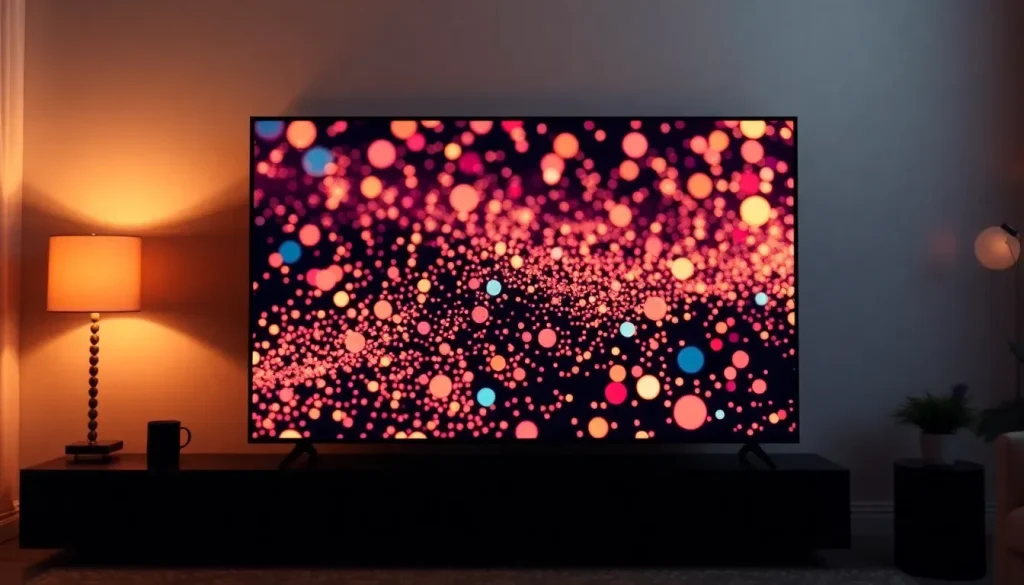Understanding Quantum Dots and Their Impact on TV Image Quality

In recent years, television technology has evolved at an astonishing pace. We have transitioned from black-and-white tube televisions to sleek flat screens that deliver stunning picture quality. New televisions are equipped with innovative technologies designed to reproduce images as realistically as possible. One of the most talked-about advancements in this realm is Quantum Dot technology, particularly in Samsung's QLED TVs, which has set the standard in the industry.
Understanding Quantum Dot technology is crucial for making an informed decision when purchasing your next television. This article will delve into the origins, functionality, and benefits of Quantum Dots, allowing you to appreciate how they enhance the viewing experience.
Origins of Samsung's Quantum Dots
The journey of Quantum Dots began in 2001, when Samsung embarked on research to improve television image quality and achieve vibrant colors. This technology consists of ultra-thin semiconductor nanocrystals that emit different colors of light depending on their size.
To visualize their diminutive scale, these Quantum Dots are ten thousand times thinner than a human hair. This posed significant challenges in integrating this technology into larger displays, such as televisions.
A major breakthrough occurred in 2015 when Samsung emerged as the global leader in TV sales. That year, the company introduced its first Quantum Dot technology without the use of cadmium in its SUHD televisions. Cadmium is a vital component in Quantum Dot technology, but its toxicity led Samsung to devise a strategy to eliminate it, focusing on alternatives to achieve superior image quality. The result was the release of their QLED televisions in 2017, marking a significant advancement in television image quality.
Understanding Quantum Dot Technology
Quantum Dots have a remarkable ability to modify light waves, enabling them to reproduce a wide range of colors accurately and realistically. This results in sharper and brighter images with enhanced contrast. The smaller Quantum Dots emit green light, while larger ones generate red light. Together with the blue light from LEDs, they create the primary RGB color spectrum.
The quality of the final image relies on various factors, including the concentration of Quantum Dots and the quality of the content being displayed. Samsung's meticulous focus on these aspects ensures that their televisions deliver not only the best possible image quality but also the most realistic viewing experience.
Advantages of Quantum Dot Technology in Samsung's QLED TVs
The primary advantage of Quantum Dots is undoubtedly the superior image quality they offer. Specifically, they enable higher brightness levels and improved HDR (High Dynamic Range) performance, even in brightly lit rooms. You can say goodbye to annoying glare or the need to lower shades during daytime viewing.
Additionally, viewers often struggle to see details in dark scenes without dimming their surroundings. Samsung's QLED televisions provide deep, true blacks, regardless of ambient light levels.
Another significant advantage is the environmental impact. Samsung has developed a technology that not only reduces energy consumption but is also more eco-friendly, as QLED technology does not rely on cadmium, a highly polluting material.
- Superior image quality due to precise color reproduction.
- High brightness levels and enhanced HDR performance.
- True blacks for better visibility in dark scenes.
- Lower energy consumption and environmentally friendly.
Given these attributes, it's no surprise that Samsung has remained the leading television manufacturer for nearly two decades. If you're in the market for a new television, understanding the workings of this cutting-edge technology will help you recognize that any QLED model from Samsung is a smart choice.
How Quantum Dots Work in TVs
Quantum Dot technology operates on the principle of quantum mechanics, where the size of the semiconductor nanocrystals determines the color of light they emit. This allows for a vast spectrum of colors to be displayed with incredible fidelity.
The integration of Quantum Dots in televisions enhances the overall viewing experience by:
- Providing vibrant and accurate color representation.
- Aiding in the reduction of light bleed and enhancing contrast.
- Improving energy efficiency, leading to less energy waste.
Furthermore, the process of light absorption and emission in Quantum Dots allows televisions to reach higher brightness levels without sacrificing color quality. This technology is particularly advantageous in bright environments where traditional displays might struggle.
Comparing QLED with Other Technologies
When considering a new television, it's crucial to compare the different technologies available. Quantum Dots are often compared to OLED (Organic Light Emitting Diode) and traditional LED (Light Emitting Diode) technologies.
| Feature | QLED | OLED | LED |
|---|---|---|---|
| Brightness | High | Moderate | High |
| Black Levels | Good | Excellent | Fair |
| Color Accuracy | High | High | Moderate |
| Viewing Angles | Fair | Excellent | Fair |
| Energy Efficiency | Good | Moderate | Good |
This comparison illustrates that while each technology has its strengths and weaknesses, Quantum Dot technology, particularly in Samsung's QLED TVs, stands out for its brightness and color performance, making it an excellent option for various viewing environments.
Future of Quantum Dots in Television Technology
The future of Quantum Dot technology is promising. As research and development continue, we can expect advancements that will push the boundaries of image quality even further. Potential developments may include:
- Smaller and more efficient Quantum Dots for improved color accuracy.
- Integration with AI technologies for optimal picture settings.
- Enhanced sustainability measures to reduce environmental impact.
The continued evolution of Quantum Dots will likely shape the next generation of televisions, offering consumers an unparalleled viewing experience that blends advanced technology with user-friendly features.
For a more visual understanding of Quantum Dot technology, check out this informative video:




Leave a Reply